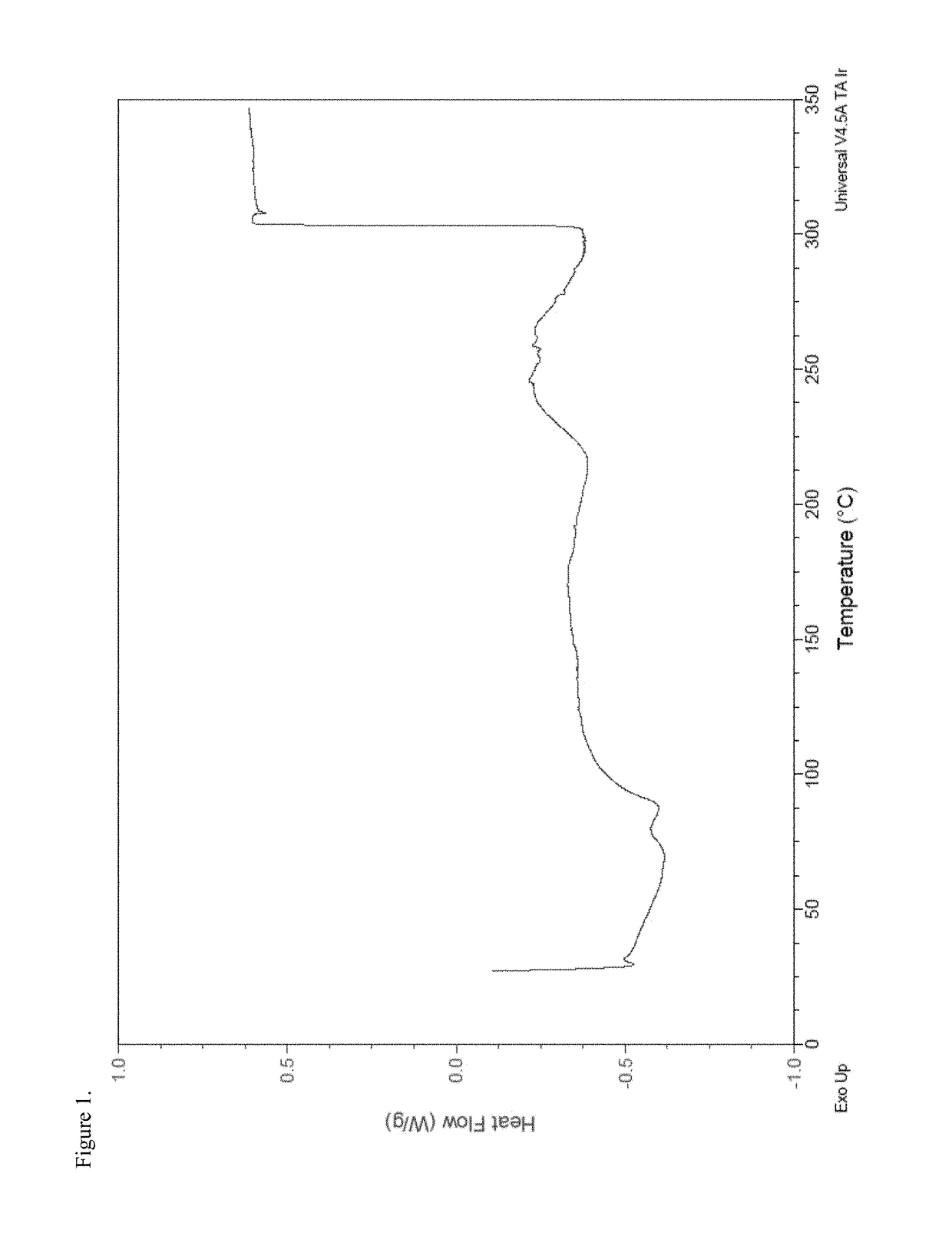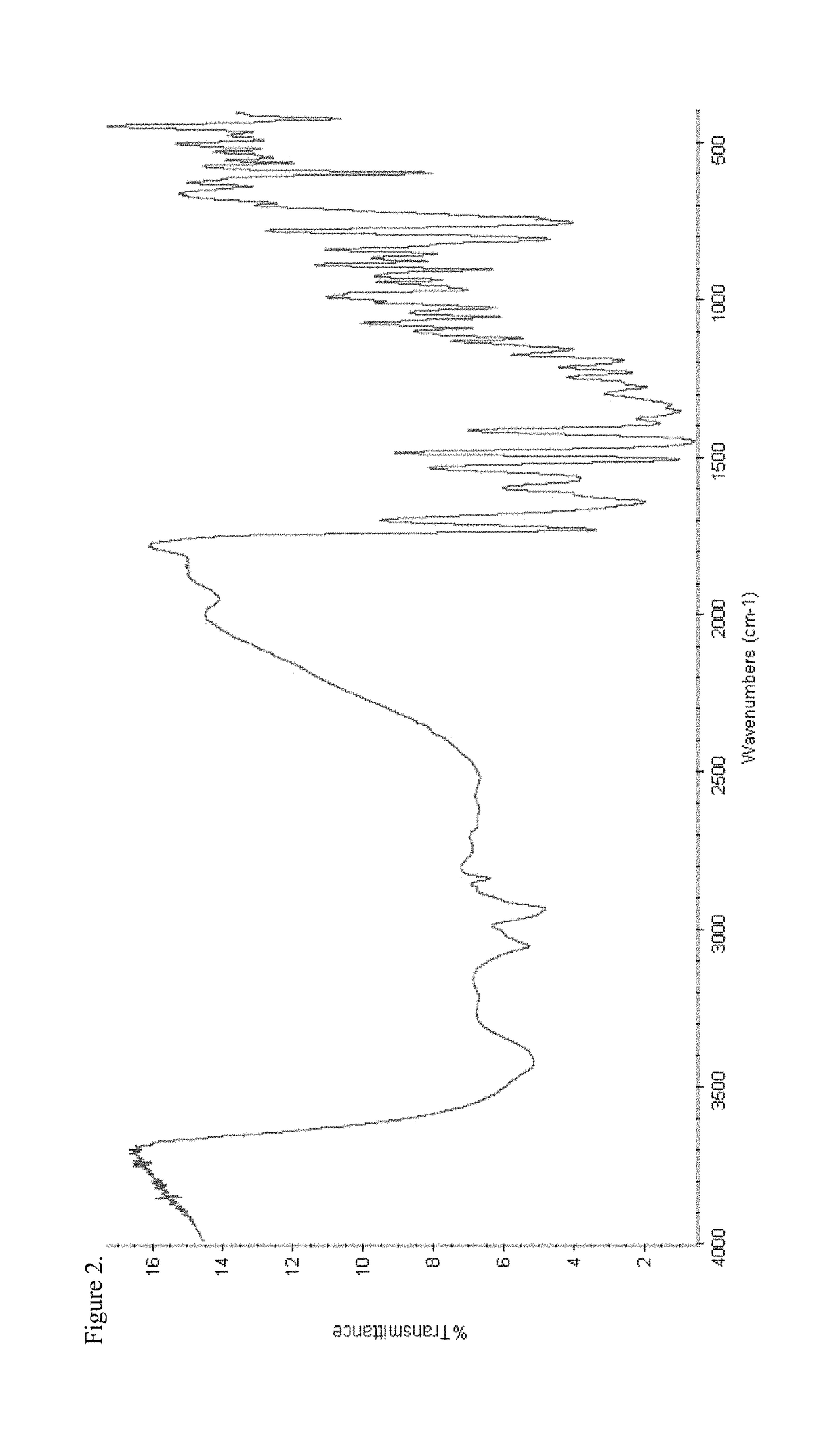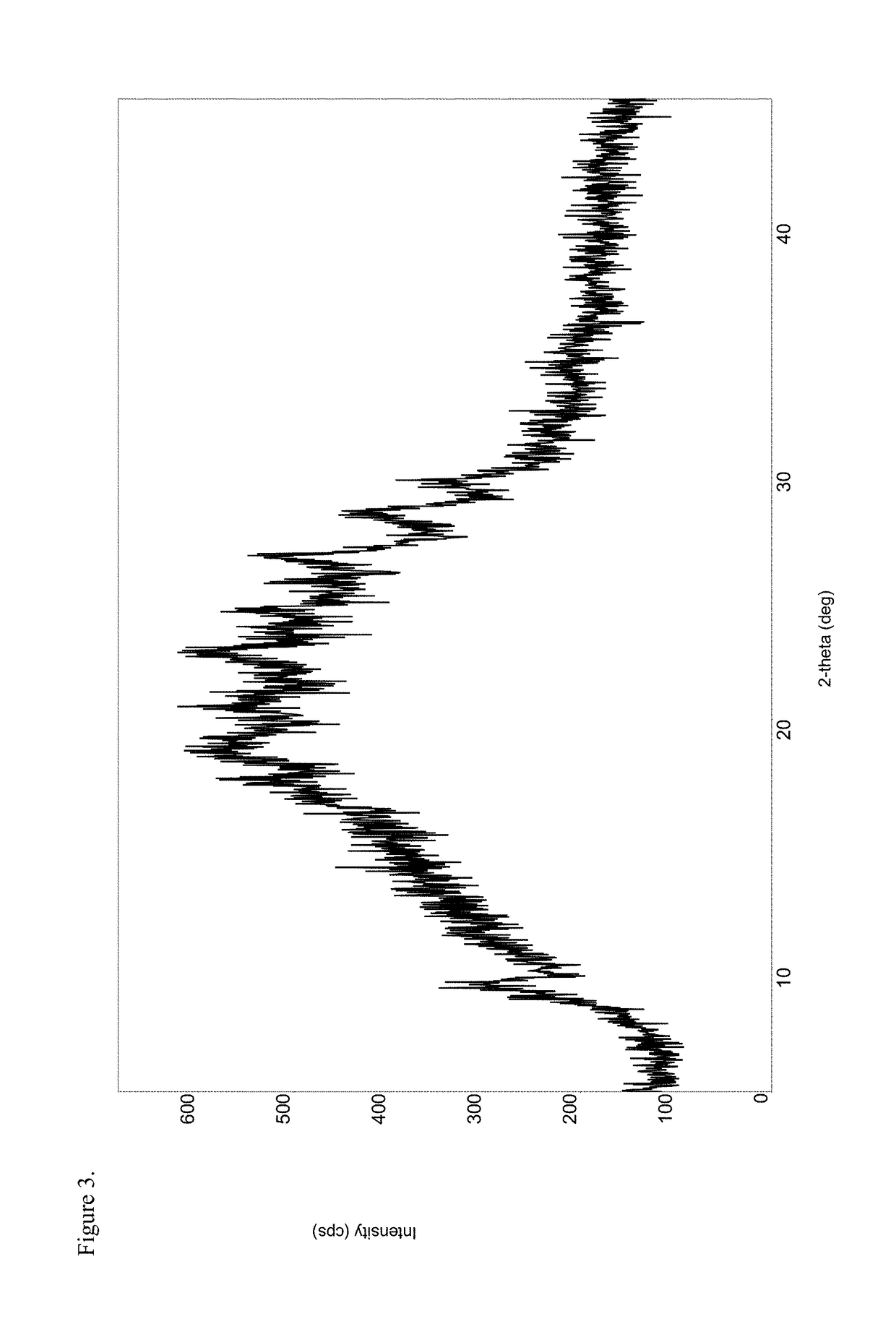Opioid and attention deficit hyperactivity disorder medications possessing abuse deterrent and anti-dose dumping safety features
a technology for opioid and attention deficit hyperactivity disorder, which is applied in the direction of pharmaceutical delivery mechanism, organic active ingredients, active ingredients of heterocyclic compounds, etc., can solve the problems of abusers being easily able to obtain life-threatening amounts of extracted drug substances, and the abusers being easily abused
- Summary
- Abstract
- Description
- Claims
- Application Information
AI Technical Summary
Benefits of technology
Problems solved by technology
Method used
Image
Examples
example 1
on of Amorphous Hydrocodone Pamoate 1:1 Salt
[0219]To a 250 mL three-neck round-bottom flask equipped with a magnetic stir bar, thermowell, nitrogen inlet and addition funnel was charged disodium pamoate (1.50 g, 3.34 mmol) and 67 mL 75:25 ethanol / water, and the contents stirred at ambient temperature under a nitrogen atmosphere. A hydrocodone acetic acid salt solution was prepared in a separate vessel according to the following procedure. To a 50 mL round-bottom flask equipped with a magnetic stir bar was charged hydrocodone base (1.0 g, 3.34 mmol) and 13.4 mL 5% acetic acid / ethanol solution and the mixture stirred at ambient temperature under a nitrogen atmosphere. The hydrocodone acetic acid solution was added over a period of about one minute to the disodium pamoate solution via an addition funnel, the pH of the combined solutions was recorded as about 6.2 and the mixture was stirred overnight under a nitrogen atmosphere at ambient temperature. The solution was concentrated under...
example 2
on of Polymorphic Hydrocodone Pamoate, (1:1) Salt
[0220]To a 250 mL three-neck round-bottom flask equipped with a magnetic stir bar, thermowell, nitrogen inlet and addition funnel was charged disodium pamoate (1.06 g, 2.34 mmol) and 48 mL 75:25 ethanol / water, and the contents stirred at ambient temperature under a nitrogen atmosphere. A hydrocodone formic acid salt solution was prepared in a separate vessel according to the following procedure. To a 50 mL round-bottom flask equipped with a magnetic stir bar was charged hydrocodone base (701.7 mg, 2.34 mmol), 7 mL ethanol and 7 mL 5% formic acid (88%) / ethanol solution and the contents stirred at ambient temperature under a nitrogen atmosphere. The hydrocodone formic acid solution was added to the disodium pamoate solution over a period of about one minute via an addition funnel, and the mixture stirred overnight under nitrogen at ambient temperature. The pH of the resultant solution was recorded as about 5.2. The solution was concentr...
example 3
on of Amorphous Oxycodone Pamoate 1:1 Salt
[0221]To a 250 mL three-neck round-bottom flask equipped with a magnetic stir bar, thermowell, nitrogen inlet and addition funnel was charged disodium pamoate (1.50 g, 3.34 mmol) and 67 mL 75:25 ethanol / water and the contents stirred at ambient temperature under a nitrogen atmosphere. An oxycodone acetic acid salt solution was prepared in a separate vessel according to the following procedure. To a 50 mL round-bottom flask equipped with a magnetic stir bar was charged oxycodone base (1.05 g, 3.34 mmol) and 13.4 mL 5% acetic acid / ethanol solution and the mixture stirred at ambient temperature under a nitrogen atmosphere. The oxycodone acetic acid solution was added to the disodium pamoate solution over a period of about one minute via an addition funnel and the pH of the combined solutions was recorded as about 6.1; the mixture was stirred overnight under nitrogen at ambient temperature. The solution was concentrated under reduced pressure (2...
PUM
| Property | Measurement | Unit |
|---|---|---|
| pH | aaaaa | aaaaa |
| pH | aaaaa | aaaaa |
| time | aaaaa | aaaaa |
Abstract
Description
Claims
Application Information
 Login to View More
Login to View More - R&D
- Intellectual Property
- Life Sciences
- Materials
- Tech Scout
- Unparalleled Data Quality
- Higher Quality Content
- 60% Fewer Hallucinations
Browse by: Latest US Patents, China's latest patents, Technical Efficacy Thesaurus, Application Domain, Technology Topic, Popular Technical Reports.
© 2025 PatSnap. All rights reserved.Legal|Privacy policy|Modern Slavery Act Transparency Statement|Sitemap|About US| Contact US: help@patsnap.com



